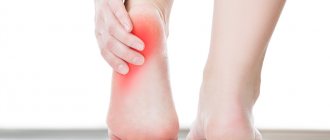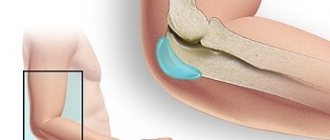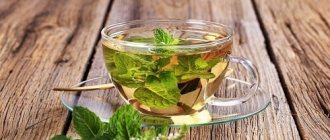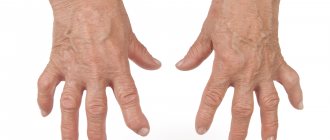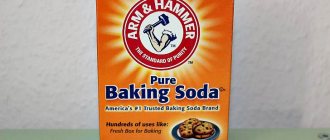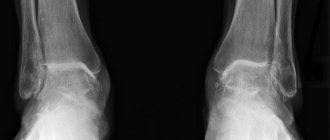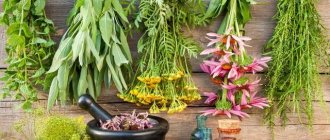Severe joint diseases force people to try many different methods and treatment regimens, from traditional pills and injections to unconventional and sometimes exotic remedies. Severe side effects and toxicity of pharmaceutical drugs force patients to look for gentle methods of treatment.
Gout is just such a disease in the treatment of which traditional methods of treatment occupy an important place.
What is gout?
Gout can affect any joints: fingers, hands, elbows, knees, but most often the joints of the toes, especially the big toe, suffer from gout, which is associated with a greater tendency to degenerative-dystrophic changes in their cartilage tissue.
History of gout research
Gout was described already in the 5th century BC. Hippocrates, but this was only a description of the symptoms. At the end of the 19th century, scientists discovered an increase in the content of uric acid salts in the blood, and then in the intra-articular fluid of patients with gout. A detailed study of the pathogenesis of gout and the development of drug treatment date back to the middle of the twentieth century.
Interesting are the various theories that link the likelihood of developing gout with various lifestyle features and personal qualities. For example, back in the Middle Ages, gout was called the “disease of abundance”, since only wealthy people suffered from it. Later, this was explained by the connection between the development of gout and the intake of large amounts of protein into the body and the participation of alcohol in its pathogenesis. Another theory was to identify the dependence of the frequency of the disease on the level of intelligence and overall success of a person. Many famous people suffered from gout (Franklin, Newton, Darwin, etc.), which gave reason to assume a similar connection.
Pathogenesis of gout
Hyperuricemia can be associated with a variety of reasons, from intense physical activity and dietary errors to severe kidney disease or oncology. The symptom complex characteristic of gout is not always formed. This diagnosis is made when signs of joint inflammation (arthritis) appear, which is the result of the deposition of uric acid salts (urates) in the joint tissues. Uric acid crystals have an irritating effect on tissues, resulting in their chronic aseptic inflammation and proliferation with the formation of gouty “bumps” or tophi. Tophi can also be located in internal organs (for example, heart valves). The tophi themselves are painless, the pain is associated with inflammation in the periarticular bursae (bursitis) or tendons (tenosynovitis). The inflammatory process causes severe pain and limited joint mobility.
Auxiliary tinctures
We offer proven and effective tinctures that help you cope with the manifestations of gout faster and more effectively. Information about suitable products is given in the table.
Table. Tinctures against gout
| Ingredients | Recipes |
| Grind hawthorn berries. Take about 40 g of the resulting mass and pour a glass of vodka. Leave for 3 days and then strain. The dosage regimen is as follows: a spoonful of tincture one hour before meals or two hours after meals. Take the tincture with boiled water. The recommended duration of treatment is 1.5-2 months. Afterwards you need to take at least a 2-week break. If necessary, the course is repeated. | |
| Dilute half a glass of natural honey in 0.5 liters of vodka. Place the homogeneous mixture in a glass container, cover with a lid and send to any dark, cool place for a week. We consume a third of a glass daily for 5-7 days. | |
| Melt unsalted butter over heat. Let it boil, remove the foam, and then add the same volume of vodka. Light the mixture. We wait for the alcohol to boil away. Let the mixture cool. We use it to rub into the affected parts of the body. |
Causes of gout
Risk factors for the development of gout include all conditions that increase the level of uric acid in the blood. This may be an increase in its intake, for example, by eating large amounts of protein, especially red meat. Uric acid can be endogenous, that is, formed from the tissues of one’s own body, for example, during antitumor therapy or autoimmune processes. If the pathological process develops as a result of any disease or its therapy, they speak of secondary gout.
Hyperuricemia may result from disruption of normal urate excretion in kidney diseases complicated by renal failure. There are situations when an increase in the production of uric acid is accompanied by a violation of its excretion - during states of shock, alcohol consumption. For this reason, combining gout and alcohol is not recommended.
A hereditary predisposition to gout has also been proven, which lies in the peculiarities of purine metabolism. Genetically determined gout is called idiopathic. It is quite rare, accounting for approximately 10% of all cases of primary gout (the remaining 90% are associated with impaired excretion of uric acid).
Hereditary predisposition to gout
The source of uric acid in the human body is purine bases (adenine and guanine), which are part of nucleic acids, and purine nucleosides (a structural component of ATP). Nucleic acids enter the body with food or are synthesized endogenously (mainly). Several enzymes are involved in the metabolism of purine bases, defects in the structure of two of them have been proven to lead to increased synthesis of uric acid: deficiency of hypoxanthine-guanine phosphoribosyl transferase (HKGPT) and increased activity of 5-phosphoribosyl-1-synthetase. In the presence of these transformations, the development of gout in children is possible. Both of these enzymes are controlled by genes linked to the X chromosome, so males are more likely to suffer from hereditary gout.
Provoking factors
An attack of gout is usually preceded by exposure to provoking factors:
- alcohol intake (the mechanism is presumably associated with an increase in the formation of urates due to the intensive breakdown of ATP when alcohol enters the body, as well as with an increase in the content of lactic acid, which impairs the excretion of urates by the kidneys);
- changes in diet, while a gout attack can be triggered by both overeating (especially fatty meat or fish) and starvation;
- injury or overload of the joint (for example, during long walking);
- taking certain medications, especially diuretics.
Signs of gout
The deposition of uric acid crystals does not immediately lead to pain. At the initial asymptomatic stage, the disease is diagnosed extremely rarely, although almost half of the patients experience attacks of renal colic before the onset of joint pain - urolithiasis develops before gout.
Most often, gout is diagnosed after the first attack of arthritis. The affected joint swells, the skin over it becomes hyperemic and hot, severe pain appears, which limits mobility in the joint. Symptoms of gout depend on the location of the lesion. Most often, isolated monoarthritis of the metatarsophalangeal joint occurs (up to 65% of cases); other joints of the legs are much less often affected (gout in the knee, ankle, other joints of the foot). Gout on the hands is extremely rare, which is due to the structural features of cartilage tissue.
Use of medicinal plants
Today, a great variety of folk recipes based on a variety of medicinal plants are known. Here are the most popular and effective ones.
Sage
We buy it at the pharmacy. Prepare in the following order:
- add about 100 g of the mentioned plant to 5-6 liters of clean water;
- put on medium heat;
- wait until it boils;
- reduce the heat and let it boil for 10 minutes;
- cool to a temperature that does not burn the skin and does not cause discomfort to the patient.
In the finished broth, steam your arms/legs for 30-60 minutes. Repeat daily for 30-60 days. The procedures help resolve cones, reduce pain and generally improve the patient’s condition.
After steaming, put on warm gloves/socks and maintain bed rest. It is most convenient to carry out such procedures before bedtime.
Oil
Whenever possible, we buy the most natural and, very important, unsalted butter. Melt 200-300 g of the product over the fire, after placing the butter in a suitable container. Bring to a boil. We remove the film that appears.
Add a similar volume of alcohol to the oil (pharmaceutical alcohol is suitable, but it is better to use wine alcohol if possible).
Set fire to the mixture. Let the alcohol burn out. Cool the resulting product to an acceptable temperature and rub it into troublesome areas. At the same time, we ourselves are next to a fireplace, stove or other heat source.
After rubbing, we lie down in a warm bed. Repeat daily until relief occurs.
Pharmaceutical chamomile and elderberry
We take the same amount of the mentioned components, mix and pour boiling water (about 1-2 liters per 100-200 g of mixture). Place on the fire and let it boil. Remove from heat, strain and cool to a temperature tolerable for the patient. Pour the strained broth into cloth pads. We apply the filled pads to the disturbing areas and fix them in any suitable way, for example, by tying them with rag belts.
A similar recipe can be used for pain of a different nature, for example, headaches, dental, lumbar, etc.
Strawberries
The recipe is extremely simple: we use fresh berries as food. This healing product helps fight metabolic disorders, helps eliminate the signs of rheumatism, gout and other diseases of a similar nature.
Lilac
Can be collected in the yard, or purchased at a pharmacy. Fill a couple of large spoons of flowers with a splash of vodka. Leave in some dark place for 5-7 days. Shake the container with the infusion being prepared a couple of times a day. We consume 50 drops of the prepared tincture before meals (but no more than 3-4 times a day).
Important! The recipe is contraindicated in patients with alcohol intolerance and/or a tendency to alcohol dependence.
Series
Pour a couple of large spoons of the string into half a liter of fresh boiling water (you can take more components, observing the specified proportion). Let it brew for 15-20 minutes. Cover the dish with the infusion in a saucer, preferably a porcelain one.
Strain the finished infusion and drink it like tea. The dosage has not been established. We drink every day.
Important! A properly prepared infusion has a golden color. There is no point in drinking a liquid of cloudy green or other shades - firstly, it is not particularly tasty, and secondly, drinking the “wrong” tincture will not give any significant clinical effect.
Ivy
We use leaves. Add half a small spoon of the mentioned herbal ingredient to a glass of pre-cooled boiled water. Leave for an hour and a half and strain. We drink a third of a glass of strained infusion before meals.
Hop cones
We use pharmaceutical powder prepared from the specified plant. We'll make an ointment. The recipe is:
- take a large spoon of powder;
- carefully grind the powder with the same amount of fresh butter (you can use lard instead of butter, but it must be unsalted);
- Apply to painful areas twice a day.
We use this recipe:
- Cut 5 medium peeled apples into small pieces;
- Fill the chopped apples with water so that the fruits are covered;
- bring to a boil, cover with a lid and boil for about 10-15 minutes;
- leave the broth to infuse for 4-5 hours.
We drink the finished infusion like tea throughout the day.
Barberry
Pour 50 g of barberry bark with a glass of 70-degree medical alcohol. Leave for a week in a dark place. We drink 30 drops of this tincture before meals.
The product helps get rid of salt deposits and reduce the severity of gout.
Classification of gout
- Acute attack of gout. Sharp pain in the affected joint is accompanied by changes in the skin over it and a deterioration in overall health. As a rule, one joint is affected; polyarthritis is rare and predominantly affects women. Fever can be febrile, with severe intoxication. Movement in the joint is impossible due to severe pain. An acute attack most often begins at night after exposure to provoking factors. The first attack occurs suddenly, and subsequent ones may be preceded by tingling sensations. Without treatment, gout attacks become more frequent and new joints may become inflamed.
- Subacute course. For a long time, the patient may experience mild pain in the area of the affected joint, swelling and other signs of inflammation periodically appear.
- Interictal period. Between attacks, the disease does not manifest itself in any way, and the patient feels absolutely healthy, so doctors talk about the intermittent course characteristic of gout. Remission can last for several years, but usually attacks recur 1-2 times a year.
Atypical forms of gout
Diagnosis of atypical forms of gout is especially difficult; there are several of them:
- rheumatoid-like;
- pseudophlegmonous;
- polyarthritic (migratory);
- asthenic;
- periarthritic form, that is, when the inflammation is localized in the tendons and periarticular bursae (bursitis and tendonitis) without involving the joints. This form is most often localized in the heel tendon area.
If you experience similar symptoms, consult your doctor
. It is easier to prevent a disease than to deal with the consequences.
Compresses
Carrying out these therapeutic procedures will eliminate swelling of the joints and mild discomfort that occurs when the weather changes, exacerbation of other chronic pathologies, and after physical activity. Fresh young leaves of cabbage, horseradish, plantain, and burdock are used for compresses. They are washed with running water and soaked for a couple of hours, then dried with a paper towel. Doctors recommend additionally scalding plant materials with boiling water to prevent infection.
Compress for toes for gout.
Leaves for compresses can be used in two ways:
- vegetable raw materials (1 large leaf or 2-3 small ones) are crushed using a blender or simply ground to a pulp in a porcelain mortar. Add a teaspoon of almond, peach or wheat germ cosmetic oil, mix thoroughly and apply to sore joints;
- The leaf is kneaded well until drops of juice appear on its surface, then a layer of liquid honey is applied to it. Rub any fatty cream into the joint and apply a sheet.
To enhance the therapeutic effect, you can apply plastic film and thick fabric over the compress, securing the bandage with gauze or an elastic bandage. The duration of the treatment procedure is 1-2 hours. If pain, burning, or a “twitching” sensation occurs, you should quickly wash off the remaining mixture from the surface of the skin.
Pain in the joints of the fingers due to gout.Diagnosis of gout
Diagnosis of gout includes clinical and laboratory criteria. The clinical criterion is the identification of tophi, and the laboratory criterion is an increase in the level of uric acid in the blood. It is important that the threshold values for this indicator for diagnosing gout are different in men and women (>0.42 mLmol/L in men and >0.36 mLmol/L in women). The content of uric acid in urine is also determined, sometimes dynamically, after a week of following a therapeutic diet.
To diagnose gout, other tests (blood, urine) can be prescribed, but the most important is blood biochemistry. Hyperuricemia without clinical signs does not warrant a diagnosis, since arthritis develops in less than 10% of patients with elevated uric acid levels.
ultrasound of joints are used as auxiliary methods for diagnosing gout.
, which allows for a more reliable assessment of the presence and size of tophi. Tophi can have not only subcutaneous localization, they can be located in bones and internal organs. Such formations can only be detected using instrumental diagnostic methods.
In chronic gout, signs of cartilage destruction (narrowing of the joint space) and marginal bone erosions are determined by X-ray. The longer the disease lasts, the more pronounced the destruction becomes. Changes can be detected even in those joints that do not bother the patient.
Sometimes, in order to clarify the diagnosis, a trial treatment with colchicine is prescribed. In most cases, gout shows rapid positive dynamics, which serves as the basis for confirming the diagnosis. But it is worth considering that colchicine is also effective for some other diseases.
Treatment of gout
Exacerbation of gout: what to do?
Treatment of gout during an exacerbation most often requires hospitalization in a specialized department, especially if the exacerbation is the first and detailed diagnosis is necessary. When asked which doctor treats gout, there may be several answers. Ideally, this is a rheumatologist, but not all hospitals have this specialist, so you can contact a therapist or surgeon.
General measures include fixing the limb at rest, applying ice, and when the pain subsides, applying a warm compress. Drinking plenty of fluids or infusion therapy is prescribed to enhance the excretion of urate.
Treatment of gout with medications has two main goals: suppressing inflammation and reducing pain. Colchicine or non-steroidal anti-inflammatory drugs (NSAIDs) are prescribed, which in most cases give a fairly quick effect.
If the condition does not improve, then glucocorticosteroids (GCS) are used, sometimes even injecting them directly into the joint cavity. The drugs are prescribed orally or parenterally; there are ointments and creams for gout, which mainly contain NSAIDs.
To more quickly restore joint mobility and resolve the inflammatory infiltrate, physiotherapy is used (ultraviolet irradiation, UHF electric field, pulsed currents, dimexide applications).
Without treatment, a gout attack goes away on its own, but this process can drag on for several days, which is painful for the patient.
Treatment of gout during the interictal period
Between attacks, during the period of remission, active therapy is not required, although there are a number of recommendations, the implementation of which helps reduce the frequency of exacerbations. Treatment of gout during the interictal period is carried out at home.
The most important thing for gout is proper nutrition. The diet for gout should be minimal in foods containing purines (meat and fish, coffee, tea, cocoa). Very often, a disorder of purine metabolism is accompanied by dyslipidemia, so unsaturated fatty acids are included in the diet for gout. Fasting is strictly contraindicated, as it leads to the breakdown of one's own tissues and an increase in the level of purines and uric acid.
To reduce the amount of urate in the blood, drug treatment for gout may be indicated. For this purpose, uricodepressants (reduce the synthesis of uric acid) and uricosuric drugs (increase the excretion of uric acid, reducing reabsorption and increasing the secretion of urate in the renal tubules) are used. There are medications for gout of mixed action. The choice of drugs depends on the pathogenesis of the disease in a particular patient. Taking uricosuric drugs (anturan, urodan) is indicated only if renal function is not impaired and there are no signs of urolithiasis. When prescribed, daily diuresis should be at least 2 liters.
Allopurinol is one of the most well-known medications for gout. It inhibits xanthine oxidase, preventing the formation of uric acid from purines, that is, it belongs to the group of uricodepressive drugs.
Physiotherapy courses are often prescribed between attacks: ultrasound for crushing and resorption of crystals, phonophoresis with hydrocortisone to combat inflammation, heat therapy.
Treatment of gout with folk remedies
Folk remedies for gout are recommended to be used during remission or in subacute cases - during an attack they can only have an auxiliary value.
- Treatment of gout with iodine and aspirin - 5 aspirin tablets should be crushed and dissolved in 10 ml of iodine. Before going to bed, wipe the affected joints with the resulting liquid and wrap them in a warm cloth. You can take baths with iodine (9 drops of iodine per 3 liters of water) - this is one of the most popular folk remedies for gout of the legs.
- Treating gout with herbs is a very gentle but effective method if used for a long time. You can make chamomile baths, brew tea from a string or lingonberry leaves.
- Treating gout with bay leaves is becoming increasingly popular. Decoctions and ointments are made from it, as it is believed that laurel has a beneficial effect on joint tissue.
Where can I buy
The online store “Russian Roots” offers finished products and components for the preparation of medicinal potions for gout. Delivery in Moscow and the Moscow region is provided by a courier service; orders to other regions are sent by mail. Call and order traditional medicine from us, prepared from environmentally friendly, high-quality raw materials. The products presented in the online store are also sold in our herbal pharmacies in Moscow.
Attention! All materials published on our website are protected by copyright. When re-publishing, attribution and a link to the original source are required.
Diet for gout
Nutrition for gout is one of the key treatment points. It is the correction of the intake of purines in the body that makes it possible to minimize the frequency of exacerbations and alleviate the course of the disease as a whole. The treatment table for gout and urolithiasis, which has a similar pathogenesis, has No. 6. Its features are:
- exclusion of foods rich in purines and oxalic acid;
- limiting protein intake, dietary meats (turkey, rabbit, chicken) are recommended;
- limiting the consumption of refractory fats;
- moderate salt restriction;
- increasing the amount of fluid consumed (if there are no contraindications to this, for example, arterial hypertension or kidney disease with impaired excretory function);
- alkalization of food through dairy products, vegetables, fruits, a vegetarian diet is ideal for gout;
- greens are allowed, but parsley and green onions are limited;
- It is recommended to boil meat and fish; other products can be cooked in any way.
What should you not eat if you have gout?
For gout, it is recommended to completely exclude from the diet offal, smoked meats, salty and spicy cheeses, animal fats, as well as fried and salted fish, caviar, and canned food. The consumption of legumes (peas, beans, etc.) is also prohibited. Sauces, spices, and alcohol can worsen the course of the disease. From sweets, chocolate and cream are prohibited, from berries - raspberries, grapes, figs.
What to drink for gout?
If you have gout, it is recommended to completely avoid coffee, cocoa, strong tea and, of course, alcohol. All types of alcoholic beverages are prohibited, including beer. Juices are allowed, especially freshly squeezed, fermented milk products (yogurt, kefir), as well as regular milk.
Diet during a gout attack
In case of exacerbation of gout, meat and fish are strictly excluded, sometimes fasting days are arranged (every other day). Fasting days are by no means fasting, which will lead to the breakdown of your own tissues and an increase in uric acid in the blood. Fruit and vegetable fasting days involve the consumption of 1-1.5 kg of vegetables and fruits (except legumes), cottage cheese and kefir fasting days - approximately 400 g of low-fat cottage cheese and 500 g of kefir per day, dairy or kefir fasting days - 1-2 liters of milk or kefir. Such fasting days contribute to the effective alkalization of urine, that is, they increase the solubility and intensity of excretion of uric acid.
Why is gout dangerous?
Gout, diagnosed in the early stages, with adequate treatment does not lead to serious consequences and can become aggravated very rarely. In other cases, a progressive increase in uric acid levels leads to irreversible deformation of the joints with limited mobility. Very often, gout occurs together with urolithiasis, which has similar mechanisms of pathogenesis. This combination is potentially dangerous due to the possibility of reducing renal function and worsening hyperuricemia.
Risk group for developing gout
The risk group for the development of gout consists of older men, especially those suffering from atherosclerosis, diabetes mellitus, kidney disease, and arterial hypertension. There is also a high risk of developing gout during antitumor therapy. If there are cases of gout in the family, then the likelihood of developing the disease is much higher. The risk group includes people who consume large amounts of protein foods and abuse alcohol.
Wine as medicine
Traditional wine-based recipes help, firstly, to reduce the production of uric acid salts (which are one of the main reasons for the development of the characteristic symptoms of gout), and secondly, to more quickly remove pathological deposits from the body.
There are several recipes, as before.
- Lightly heat about 40-50 ml of natural red wine. Take orally 15 minutes before meals. The duration of such treatment is 1 month.
- Squeeze the juice of a grapefruit and a medium orange.
Mix with 50 ml of red wine. Leave for 15 minutes. We take the finished medicine orally in an amount of 30-40 ml before meals. Duration of therapy is a week.
- We take equal parts of fortified wine and natural butter.
It is important that the latter is unsalted. Melt it over low heat. Having brought to a boil, remove the foam/film from the melted product and add wine. We wait until the alcohol burns out. Let cool to an acceptable temperature. We use it to rub into the affected parts of the body. Repeat at least twice a day for 2 weeks.
- About 300 g of herb called Turkestan mandrake pour 0.5 liters of fortified wine.
The mixture should be in a glass container. We send it to any dark place for a week. Use it to rub affected joints before bed. Repeat daily for 2.5-3 weeks.
Prevention of gout
The main thing in the prevention of gout is proper nutrition, especially if a biochemical blood test revealed an increase in uric acid or there is a hereditary predisposition. It is also recommended to limit alcohol consumption and treat concomitant diseases that may contribute to the development of gout.
Dietary recommendations are similar to those for gout, although they do not require such strict adherence. It is recommended to limit proteins and fats, spicy and smoked foods, preservatives and spices with a parallel increase in the diet of vegetables (except legumes) and fruits, and dairy products. It is recommended to drink plenty of fluids to improve urate elimination.
General strengthening of the body will help maintain its ability to regulate the balance of metabolic processes. For this purpose, dosed physical activity that trains the cardiovascular and respiratory systems is recommended.
This article is posted for educational purposes only and does not constitute scientific material or professional medical advice.
